I wanted to test the new PSK but did not have an available day. Then a work event cancelled at the last minute, which allowed me to make a quick trip to the bush in early March.
The weather in the late afternoon was unusually warm, around +8*c and I quickly gathered my equipment. It is easy to assemble the gear for one of these trips because you do not take much. I provided my wife with a map of my location and who to contact if I was not back by noon of the next day. The plan was to test the Two Pocket Survival Kit but I also took along communication (Cell Phone, Sat. Phone, PLB) and location devices (GPS, Map, Compass) plus snowshoes to get me into the site. I left the house in a hurry and drove the 25km to the trailhead, I had about an hour of daylight left. When assembling my gear I found I had forgotten a critical item, MY COAT! I was tempted to try the exercise without it but declined and raced back to town to get it. By the time I got back to the trailhead it was 15 minutes after sunset and it was getting dark in a hurry.
I walked the 400m into the lake on an established snowmobile trail. An open creek and thin ice were found where the trail met the lake as seen here, the snow in the bush was about 45cm deep. There was slush on the lake but a lot less snow.

I had never been to this location before and quickly needed to find a campsite with conifer boughs to make an insulated bed and abundant dry firewood.
People had been ice fishing on the lake that afternoon for Rainbow Trout, I found their open holes and the minnows/worms they left were still alive in a watery slush hole.
I crossed the lake and found a spot on the far side, a grove of conifer trees (spruce/jack pine) and a marsh full of standing dry firewood in a bay about 200m away. It was now dark and this would have to do.
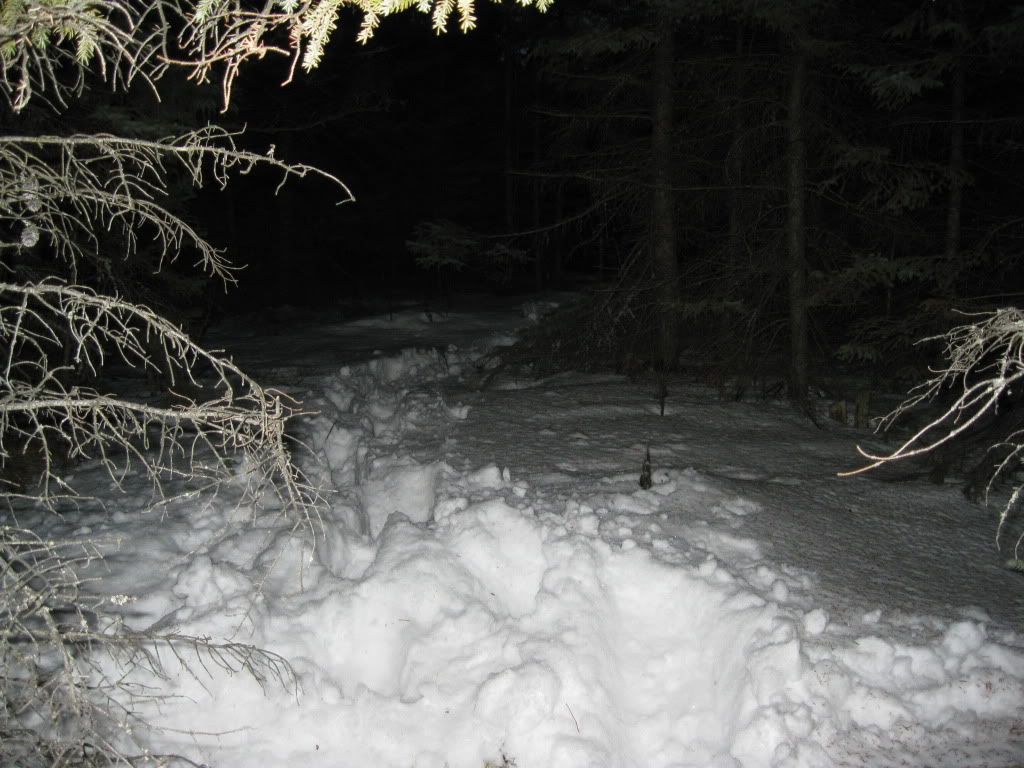
By the light of the headlamp I shoveled out a campsite with a snowshoe and used the Gerber Saw to fell some spruce trees. The boughs were used to create a 30cm thick bed and the poles became the frame of my lean-to. I used the Glow-in-the-Dark Nylon Mason Twine to lash the pole to the trees. I then added some thin birch support ribs and tied the AMK Blanket out as the lean-to roof. The blanket was both tougher and larger than I expected.
It had been warm doing this work and I had stripped down to my Polypro undershirt and cargo pants. I did not start a fire first because I knew there was not a lot of firewood close by, and I wanted to save it for later.
After the shelter was done I gathered a couple armloads of wood and lit the fire using the waterproof matches and a paraffin packet in the kit, no problem.

The finished camp can be seen below.
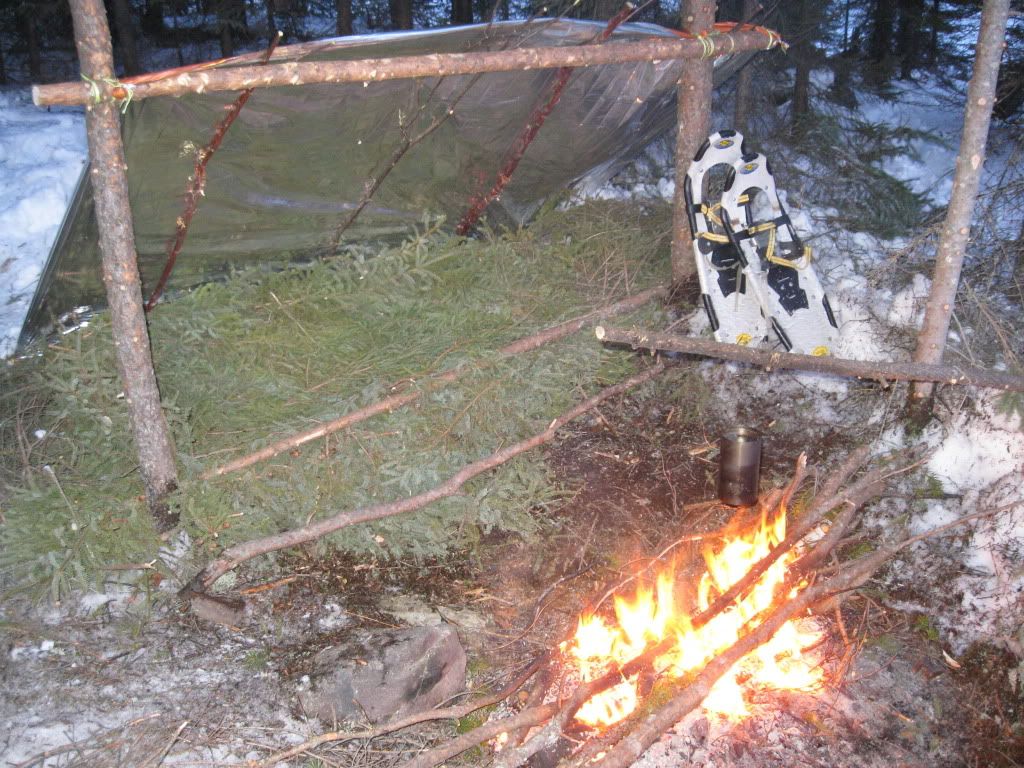
I had a PowerBar and sweet Earl Grey Tea for supper in the late evening.
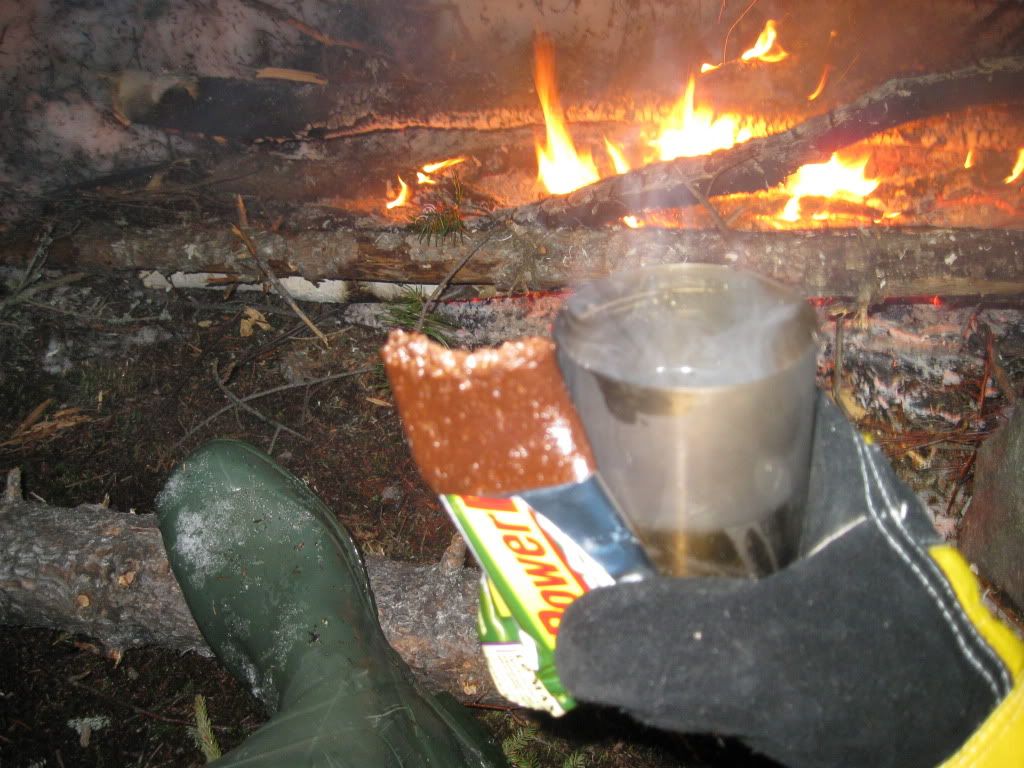
At around 11.00pm I went to cut some large firewood in the marsh, I found that the surface ice was "hanging" and as I started onto it the upper layer dropped about a foot! I was very reluctant to get wet at this time of night, therefore I had to make do with the limited firewood around the camp. There was lots of material to burn, the trouble was that it was all small diameter conifer, that burned hot but very quickly. It was a familar routine, stoke-up the fire, sleep for 15 minutes, awake to stoke the fire again. I burnt about a pickup truck load of wood through the night! The temperture dropped to app. -5*c and by 2 am I had all my clothing on. Heavy Polypro Underwear, Wool WindStopper Sweater, Cargo Pants, 2 piece Mustang Floater Suit, Neckwarmer, Toque, Hy-Artic Mitts and lined Rubber Nokian Boots.
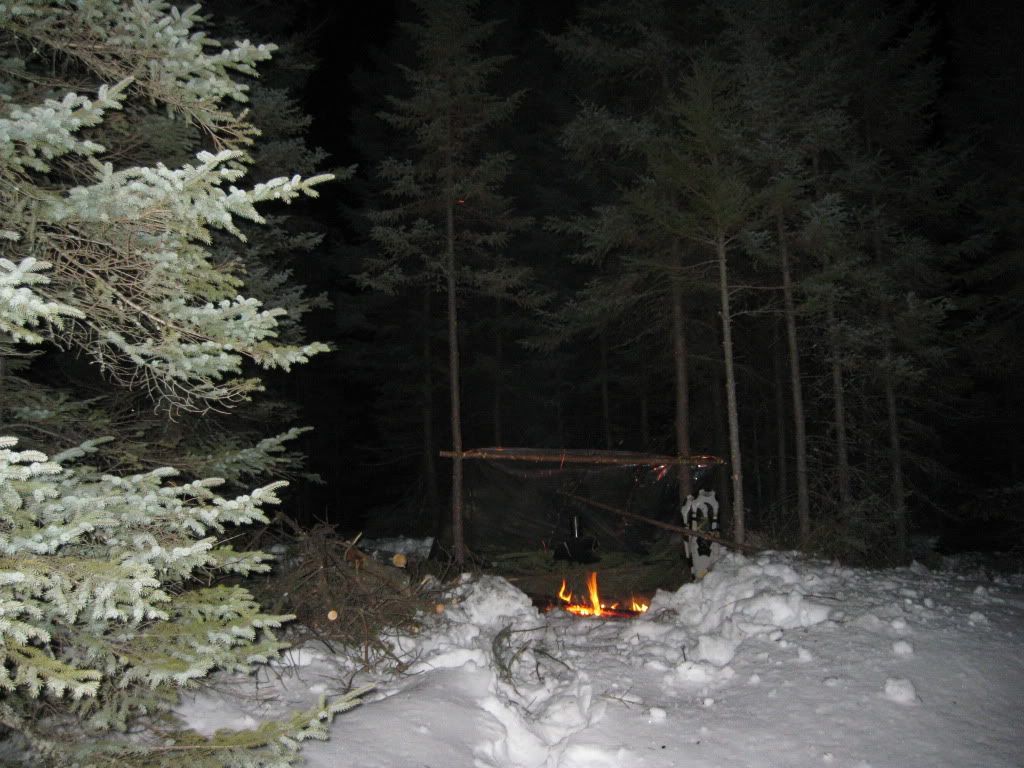
Dawn came around 6.00am and I tried about an hour of fishing in the holes from the afternoon before, as they had only iced over about an inch. I even used the other fisherman's minnows as they were still alive in the slush hole. No luck fishing so it was instant coffee only for breakfast.
Live Minnows (the worms were frozen solid)
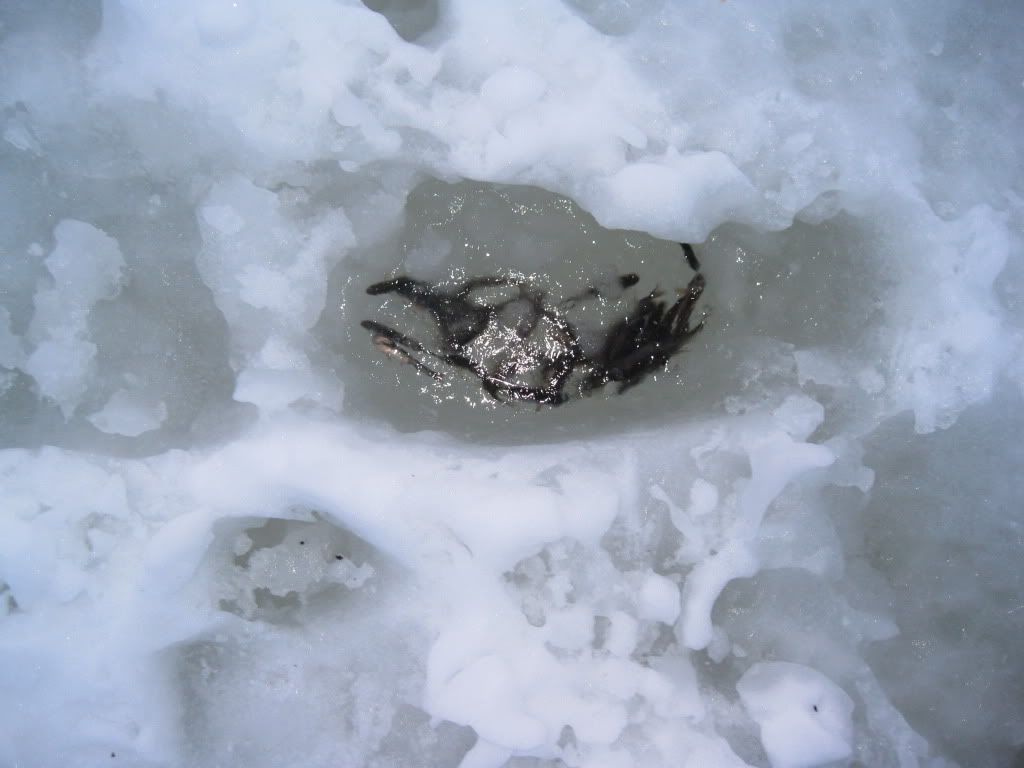
By 7.30am I had pulled my lines and taken down the camp, it was nice to jump in the truck and head back to a warm house and big breakfast in town.
I will review the equipment that worked and what did not later, along with the lessons learned.
Take Care,
Mike